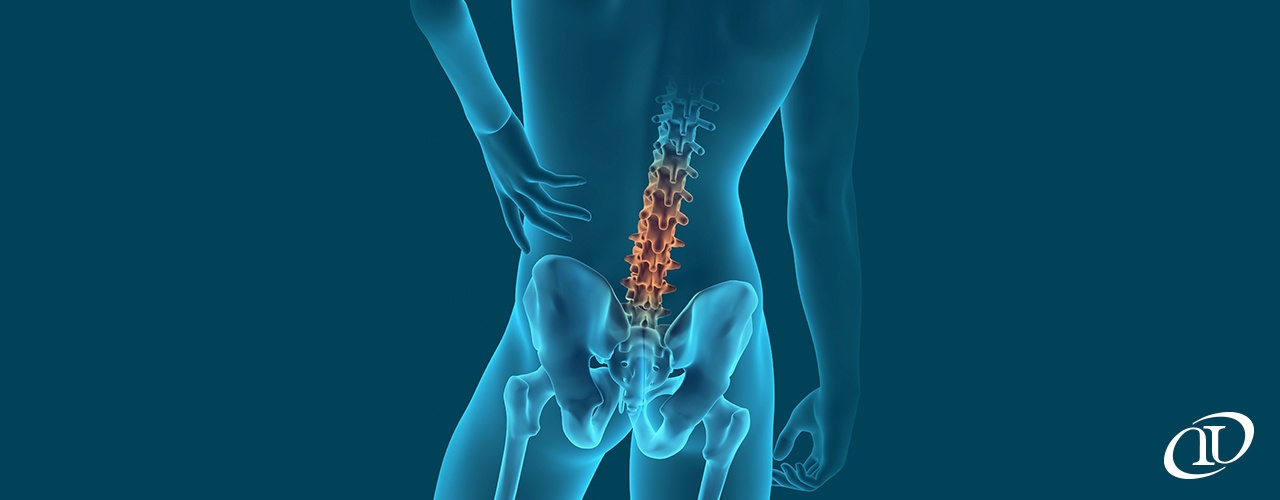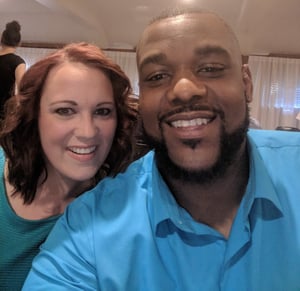
Chronic pain in the lower body is a relatively common problem, especially among patients with neuropathic pain, or pain caused by damage to the nervous system. DRG Stimulation is a revolutionary form of pain management that can target and prevent pain signals from being transmitted.
Learn more about your DRG (yes, you have one) and this revolutionary new treatment option for pain.
What is the DRG?
The dorsal root ganglion, or DRG, is an easily accessible group of nerve cell bodies in your spine that is tasked with transmitting pain signals from the lower half of your body to your brain. Damage to your DRG can cause serious and persistent neuropathic pain that does not respond to traditional treatments, such as spinal cord stimulation (SCS). DRG stimulation is a way to specifically target and manage this pain.
What is DRG Stimulation?
DRG Stimulation is a form of targeted neuromodulation similar to spinal cord stimulation (SCS) procedures. Neuromodulation is the strategic electrical stimulation of certain parts of your nervous system to modify any abnormal neural pathways. The key difference between spinal cord stimulation and DRG stimulation is that, while spinal cord stimulation targets the spinal cord, DRG Stimulation targets the dorsal root ganglion in particular.
DRG stimulation is performed by implanting thin wires connected to a generator on your DRG. The generator is controlled by the patient and sends electrical pulses through the wires to specific regions of your DRG. This signal interrupts pain signal transmission to your brain and helps to alleviate pain.
How Can DRG Stimulation Help My Pain?
For people with neuropathic pain, DRG stimulation can effectively block pain signals without the need for medication. The key benefit of DRG stimulation is that it provides specific and targeted pain relief to the lower body. Compared to spinal cord stimulation, DRG stimulation is associated with fewer instances of paresthesia, or tingling in the lower body. Additionally, pain relief through DRG stimulation doesn't diminish over time, and - because DRG stimulation requires less energy - there's more time between generator charges.
Sheku's Story
 As a lifelong athlete and former University of Sioux Falls lineman, Sheku Bannister (shown here with his wife Amanda) was no stranger to powering through pain. But nothing prepared him for life with chronic pain.
As a lifelong athlete and former University of Sioux Falls lineman, Sheku Bannister (shown here with his wife Amanda) was no stranger to powering through pain. But nothing prepared him for life with chronic pain.
It all started in 2015 when Sheku fell three stories off a roof and severely injured his right foot and ankle, resulting in plates and pins - and chronic pain. Over one year after surgery he still didn't have relief and was beginning to lose hope.
"I was in a dark place. The medication wasn't working. It was a nightmare," he said.
Sheku was referred to Dr. James T. Brunz at the Orthopedic Institute. "I was fighting to get back to normal," he said. But fighting didn't include taking long-term pain medications, especially after watching several family members struggle with drug addiction. When Dr. Brunz suggested DRG Stimulation, Sheku considered his options. "I didn't want another surgery," he said. "But I decided to take things into my hands and talk to the physicians I could trust. Dr. Brunz was one of them."
"I would recommend DRG Stimulation to anyone—it's a very good option."
In March of 2018, Sheku underwent DRG Stimulation. "I don't know how to express the increase in quality of life, let alone the reduction in pain," he said. "It's a day and night difference from before."
"Dr. Brunz is amazing, but so is the OI staff across the board. Nurses, therapists, office staff ... everyone I came in contact with gave me nothing but acceptance and care. They were always willing to find an answer. I'd given up on myself, but they never did."
"The pain didn't just affect me—it affected my family, friends ... everything. It's so nice to get back to being Sheku again."
Since the DRG Stimulation procedure, Sheku has been able to get back to life with his wife and kids. He's also passionate about his motivational YouTube channel dedicated to helping others overcome obstacles.


